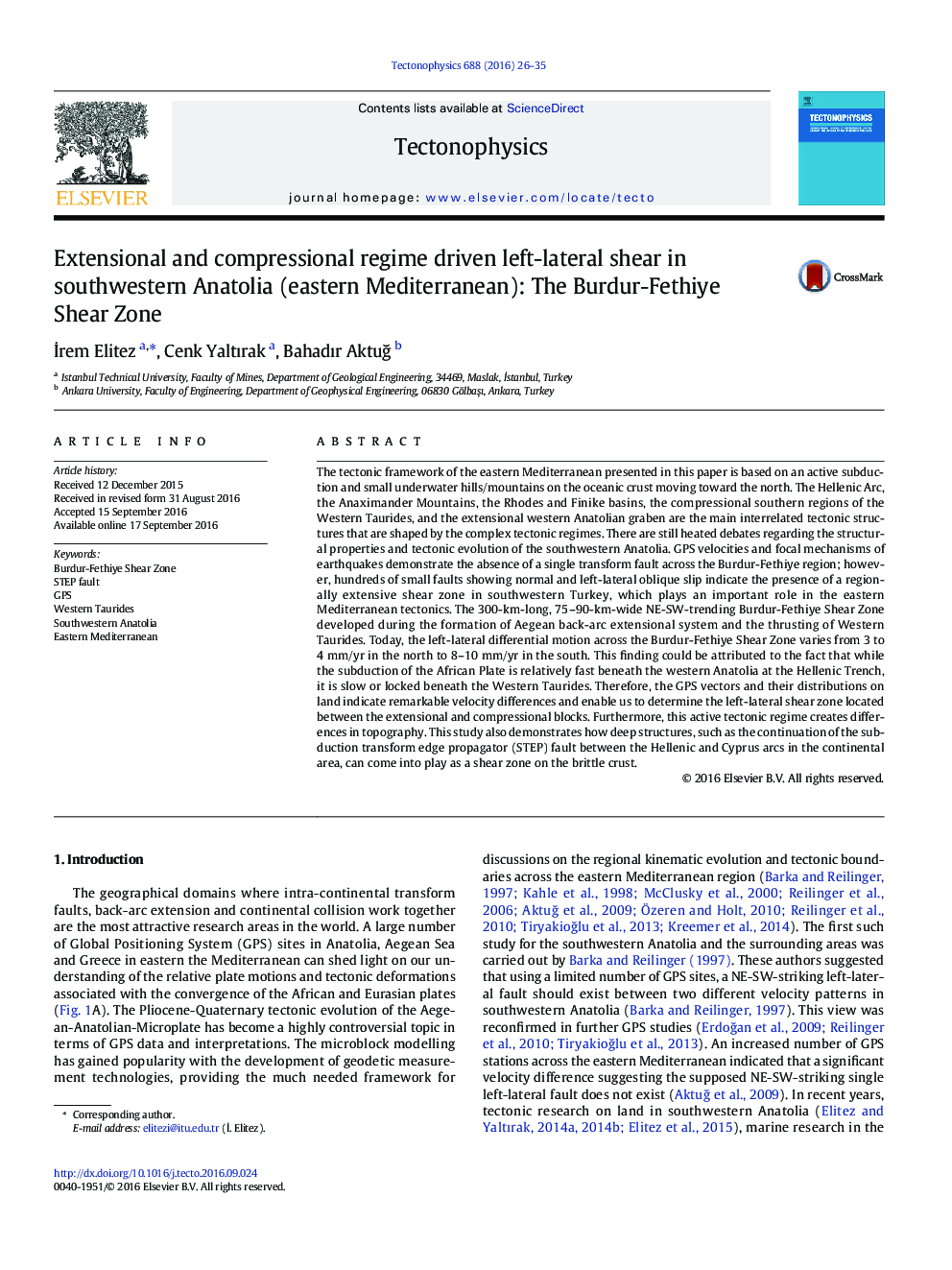| کد مقاله | کد نشریه | سال انتشار | مقاله انگلیسی | نسخه تمام متن |
|---|---|---|---|---|
| 6433237 | 1636710 | 2016 | 10 صفحه PDF | دانلود رایگان |
- Influence of the Hellenic Trench on the southwestern Anatolia
- Provided extensional and compressional regime driven shear zones
- Provided a regional tectonic synthesis for the Burdur-Fethiye Shear Zone and environs
- Provided influence of the STEP fault as a shear zone in the brittle crust
The tectonic framework of the eastern Mediterranean presented in this paper is based on an active subduction and small underwater hills/mountains on the oceanic crust moving toward the north. The Hellenic Arc, the Anaximander Mountains, the Rhodes and Finike basins, the compressional southern regions of the Western Taurides, and the extensional western Anatolian graben are the main interrelated tectonic structures that are shaped by the complex tectonic regimes. There are still heated debates regarding the structural properties and tectonic evolution of the southwestern Anatolia. GPS velocities and focal mechanisms of earthquakes demonstrate the absence of a single transform fault across the Burdur-Fethiye region; however, hundreds of small faults showing normal and left-lateral oblique slip indicate the presence of a regionally extensive shear zone in southwestern Turkey, which plays an important role in the eastern Mediterranean tectonics. The 300-km-long, 75-90-km-wide NE-SW-trending Burdur-Fethiye Shear Zone developed during the formation of Aegean back-arc extensional system and the thrusting of Western Taurides. Today, the left-lateral differential motion across the Burdur-Fethiye Shear Zone varies from 3 to 4Â mm/yr in the north to 8-10Â mm/yr in the south. This finding could be attributed to the fact that while the subduction of the African Plate is relatively fast beneath the western Anatolia at the Hellenic Trench, it is slow or locked beneath the Western Taurides. Therefore, the GPS vectors and their distributions on land indicate remarkable velocity differences and enable us to determine the left-lateral shear zone located between the extensional and compressional blocks. Furthermore, this active tectonic regime creates differences in topography. This study also demonstrates how deep structures, such as the continuation of the subduction transform edge propagator (STEP) fault between the Hellenic and Cyprus arcs in the continental area, can come into play as a shear zone on the brittle crust.
Journal: Tectonophysics - Volume 688, 12 October 2016, Pages 26-35
